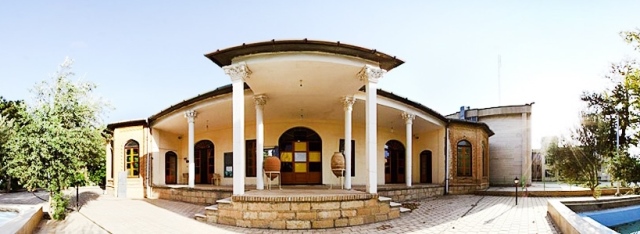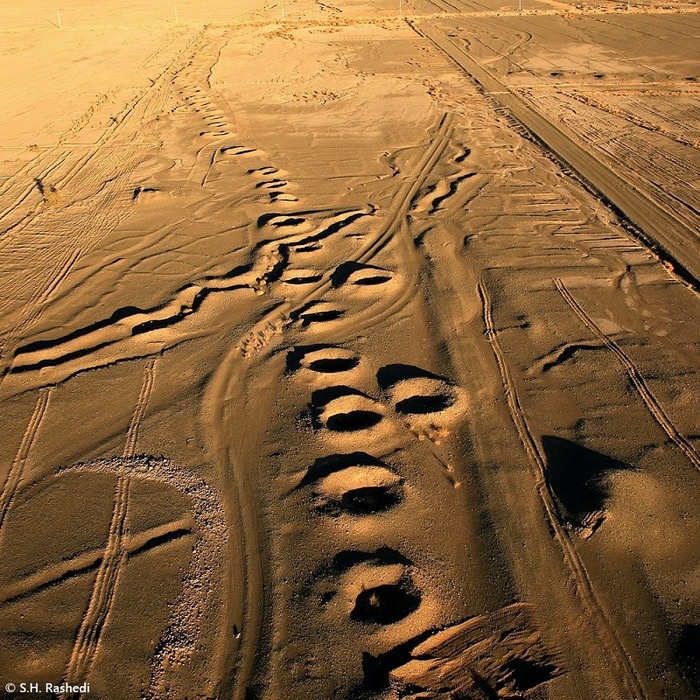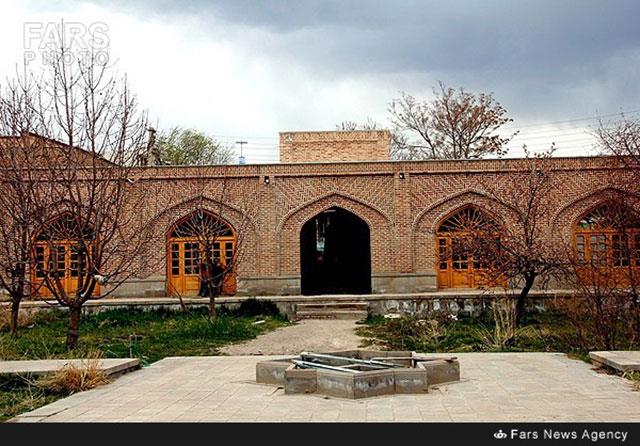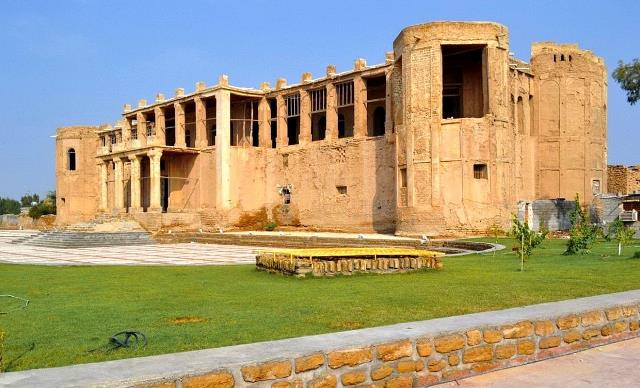
The Blue Mosque (Masjid-e Kaboud)
The Blue Mosque (Masjid-e Kaboud)
By: Azita Rajabi
According to the inscription of its main entrance this historic mosque was built by Abolmozafar Jahan Shah Kara Koyunlu - and as per some narrations by his wife and daughter - in the year 870 AH/1465 AD in Tabriz.
This mosque has been referred to with different names such as “Jahan Shah Mozaffariyeh Kaboud” (due to the background color of the interior surfaces of its porch); “Firouzeh Islam” (due to its turquoise color dome it has in the olden days); and Gouy (meaning blue in the local dialect) Masjid. According to Dieulafoy, the mosque belonged to the Sunnis. As per some reports, the main roofs of this building collapsed as a result of an earthquake in the 17th Century AD, and only the porch, the entrance, some rafters, and the main arches were left.
The entrance of this complex was built on high ground with a gable-like arch above it. Two columns with a spiral design attached to the building can be seen on both sides of the entrance which had been beautifully decorated with four-aisled and four-pillar drawings. These paintings are among the oldest paintings in Iran. After a relatively short distance, the main entrance of the mosque opens to the prayer room consisting of two large separate halls. The main roof of both halls has been demolished and rebuilt. The main niche of the mosque is located in the second hall. This niche is decorated with small carved octagonal-shaped blue tiles.
The floor of the building is paved with stone slabs and its walls are decorated with small pieces of interconnected colored tiles giving it the looks of a piece of fabric. The walls are made of marble and are decorated with “Bannai Script” (a form of Islamic calligraphy) and engraved tiles (mosaics). Owing to its difference and superiority over other Azari style decorations, the tiling style of this building is quite special and unique. The mosque had also been decorated with numerous inscriptions with such scripts as Raqa’, Kufi, Naskh, Thulth, and Nastaliq, the most important of which is the inscription with a 60 cm width that has been placed above the transverse margin of the niches.
Sources
- Evliyâ Çelebi, Travelogue, translated into Persian by Hossein Nakhjavani, Tehran, 1959
- Dieulafoy, Jane, La Perse, la Chaldée et la Susiane, translated into Persian by Alimohammad Farahvashi, Tehran University Press, 1992
- Zka’, Yahya, Iranian Cities, Jahad Daneshgahi Press, 1987
- The National Geographical Gazetteer of the Islamic Republic of Iran, Tabriz City, Armed Forces Geographical Organization, 2001
- Sistani, Afshar, A Glance at East Azarbaijan Province, Rayzan Research Institute, 1990
- Pirnia, Mohammad Karim, Stylistics of Iranian Architecture, Edited by Gholamhossein Memerian, Nashr-e Me’mar, 2004
- Zendehdel, Hassan, The Iran Tourist Guide, East Azarbaijan Province, Irangardan Publications, 1997
| Name | The Blue Mosque (Masjid-e Kaboud) |
| Country | Iran |
| Historical Period | constructed in 1465 |
| Manufacturer | Jahan Shah |


Choose blindless
Red blindless Green blindless Blue blindless Red hard to see Green hard to see Blue hard to see Monochrome Special MonochromeFont size change:
Change word spacing:
Change line height:
Change mouse type:



.jpg)









.jpg)
